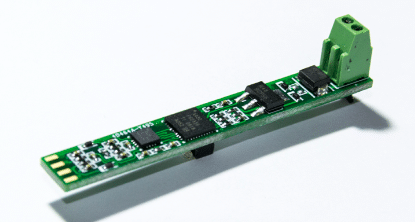This reference design is highly suitable for factory automation and process control applications, sensors and field transmitters, building automation, and test and measurement environments.

In industrial and scientific applications, accurate and reliable temperature measurements ensure optimal performance, safety, and efficiency. An RTD (Resistance Temperature Detector) temperature transmitter is vital in this context. By converting the resistance changes of an RTD sensor into a standardized electrical signal, these transmitters provide precise and consistent temperature readings.
This capability is indispensable for maintaining process control in various sectors, including manufacturing, energy production, and environmental monitoring. The importance of RTD temperature transmitters lies in their ability to deliver high-accuracy measurements, resilience in harsh environments, and integration with modern digital systems, thus enabling enhanced operational oversight and quality control.
The Texas Instruments (TI) reference design TIDM-01000 offers an efficient, low-component, and cost-effective solution for a 4- to 20-mA loop-powered RTD temperature transmitter. Utilizing the on-chip Smart Analog Combo (SAC) module within the MSP430FR2355 microcontroller (MCU) to manage loop current, it eliminates the need for a standalone DAC, achieving a precise 12-bit output resolution with a 6 µA current resolution.
It features reverse-polarity protection, complies with IEC61000-4-2 and IEC61000-4-4 standards, and supports 2-, 3-, or 4-wire RTD probes across -200°C to 850°C with less than 1°C error. The compact design (60mm x 8mm) operates efficiently from -40°C to 105°C, leveraging the ultra-low-power MCU’s integrated SAC modules for a reliable and versatile industrial and commercial solution.
The reference design is structured into three main blocks, featuring three integrated circuits that form the complete transmitter signal chain. The ADS1220, a high-precision analog-to-digital converter (ADC) from TI, interfaces with the RTD probes, whether 2-wire, 3-wire, or 4-wire. The MSP430FR2355 MCU executes the application firmware, which includes algorithms for system calibration and data processing.
The on-chip SAC module in the MCU controls the output current, ranging from 4 to 20 mA and proportional to the RTD temperature readings. The low-dropout regulator (LDO) TPS7A16 provides loop power to the system. Notably, the TPS7A16 device supports an input voltage range of 3 V to 60 V, features ultra-low quiescent current (5 µA), and comes in high thermal-performance packaging, making it a robust component for this design.
Texas Instruments (TI) has thoroughly tested this reference design, which includes a bill of materials (BOM), schematics, assembly drawing, and printed circuit board (PCB) layout. The company’s website provides additional information about this reference design. To learn more, click here.








